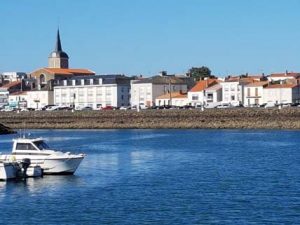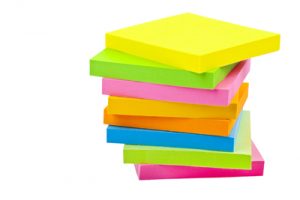
The six months before we left for France was, in a word, manic. We sold our house in Mooloolaba; donated a load of furniture to a friend who was doing it tough after the Townsville floods; moved to a short term rental property near Redcliffe; finalised and transported our goods to CargoConnect for shipment to France; organised and filled a storage shed with the rest of our stuff (we were running out of time so we plan to sort this lot when we get back to Aus); doctor’s visits to ensure we were covered for vaccinations, any regular medications and prescription medications for our first aid kit; dental check ups; liaising with the Australian Maritime Safety Authority in respect of boat registration; sorting through taxation and banking matters; Sandra’s car went into long term storage and a myriad of other tasks – all while we both continued to work full time …. thank goodness for our Post It Note strategy which kept us focused and ensured nothing slipped through the net.
The final few days began with Peter commencing long service leave and Sandra finalising the wind up of her business then it was on to final packing and cleaning of the rental property. A long drive to Adelaide to say farewell to family and friends followed. We left Peter’s car with family and plan to pick the old work horse up on our return. The 2nd July finally arrived and we flew on a Qantas ticket from Adelaide to Melbourne, then with Emirates to Paris via Dubai arriving on the 3rd July. (This was the first time we have flown with Emirates and we were very impressed with the service, seating and food – in our opinion much better than Qantas international which we have predominantly used in the past). Part of our usual travel process for long haul international flights, is to book a hotel at or near the airport on the day of arrival. Here we can refresh, relax, and have a good sleep. We stayed at the Novotel, Charles De Gaulle Airport, great staff, service and food. The hotel is a free short airport shuttle train ride from the airport.
Prior to leaving Australia, we booked our train travel to Les Sables- d’Olonne (Les Sab) online at the SNCF website – Paris to Nantes, change trains at Nantes then onto Les Sab (cost €80.50 per person as at June 2019). One of the bonuses of staying at the Novotel is that the same shuttle takes you direct to the main railway terminal at the airport. So getting there was super easy, but trying to find the appropriate platform was challenging. Firstly, the platforms cater for more than one train going to different destinations (so you need to be in the right spot), and secondly they do not announce the relevant platform until 20 minutes before the train leaves. We sought assistance from staff at the station information booth, and they were initially confused until we showed them our tickets, and we were then directed to the electronic sign boards. Sure enough 20 minutes before departure the platform appeared. NB At this stage we had no idea we were pronouncing Nantes incorrectly – we were saying ‘Nan-tes’ phonetically, but Nantes is actually pronounced ‘nont’ as in ‘gaunt’. No wonder they were confused!
The train ride to Nantes was lovely, lots of country side, small townships with a mix of traditional French and modern buildings. At Nantes we struggled to get our luggage off the platform as there was no elevator or escalator available. So we humphed it all down the stairs, only to take it all the way back up 15 minutes later as the train to Les Sables-d’Olonne left from the same platform just the opposite side. NB Make sure you have your tickets on hand, as these are checked by rail staff on each train.
Joe, The Multihull Group (TMG) representative, met us at the Le Sab railway station and drove us to the marina where we had an initial sneak peak of Sea Goddess. She was just so beautiful and everything we had hoped for. With the official handover booked for tomorrow we had a quick look around and then made our way to the Admiral’s Hotel, our accommodation for the next few days. We booked this hotel online from Australia. The hotel is well situated to the marina, chandleries, supermarket, bars and restaurants. English speaking management and reception staff are friendly and very helpful. A well stocked continental breakfast is available in the dining room each morning, a limited range of other meals for lunch or dinner are also available by ordering through Reception. A small lounge area is situated next to Reception with coffee, beer and wine available for purchase. Our room had all the basic necessities, queen size bed with ensuite, a small balcony and wifi. We enjoyed our stay here and with the close proximity to the marina and other facilities we have no hesitation in recommending this hotel.
Our next installment describes the boat handover process – getting to know Sea Goddess, the Lagoon factory tour, and then our first sail.


